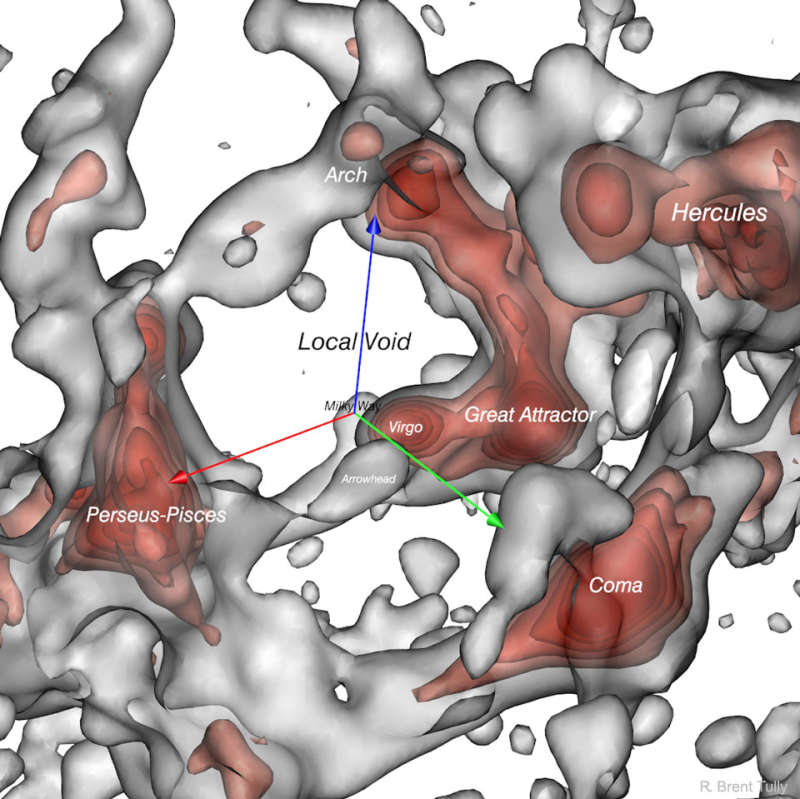The Local Void in the Nearby Universe

Explanation:
What does our region of the Universe look like?
Since galaxies are so spread out over the sky, and since our
Milky Way Galaxy blocks part of the distant sky, it has been hard to tell.
A new map has been made, however, using large-scale galaxy motions to infer what
massive objects must be gravitating in the
nearby universe.
The
featured map, spanning over 600 million light years on a side, shows that our
Milky Way Galaxy is on the edge of the
Virgo Cluster of Galaxies,
which is connected to the
Great Attractor -- an even larger grouping of galaxies.
Also nearby are the massive
Coma Cluster and the extensive
Perseus-Pisces Supercluster.
Conversely, we are also on the edge of
huge region nearly empty of galaxies known as the Local Void.
The repulsive push by the
Local Void
combined with the gravitational pull toward the elevated galaxy density on the other
side of the sky explains part of the
mysteriously high speed our Galaxy has relative to the
cosmic microwave background -- but not all.
To explore the local
universe yourself, as determined by
Cosmicflows-3,
you are invited to zoom in and spin around
this interactive 3D visualization.
Authors & editors:
Robert Nemiroff
(MTU) &
Jerry Bonnell
(USRA)
NASA Web Site Statements, Warnings,
and Disclaimers
NASA Official: Jay Norris.
Specific
rights apply.
A service of:
LHEA at
NASA /
GSFC
& Michigan Tech. U.

